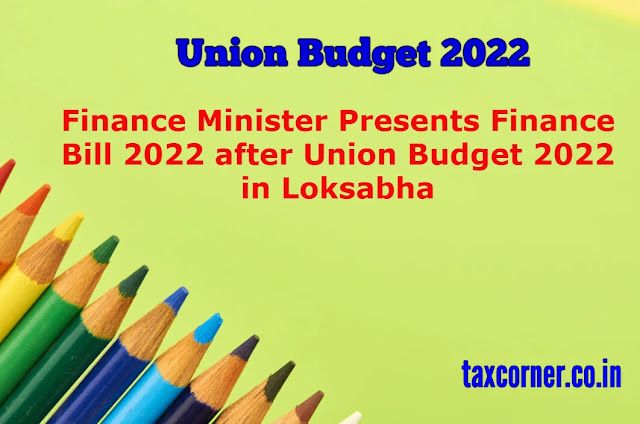Finance Minister Shrimati Nirmala Sitharaman introduced the Finance Bill, 2022 in the Loksabha on 1st February 2022 amid the ongoing COVID-19 pandemic after presenting the Union Budget 2022.
This is her fourth Budget since the formation of the 17th Loksabha in 2019 and so the Finance Bill.
Prior to 1999, the Union Budget was presented in the evening every year in India. The pattern changed in 1999 when the then Finance Minister Yashwant Sinha of NDA government headed by Atal Bihari Vajpayee started the tradition of presenting the budget at 11 am. Since then, the Union Budget is presented during the day.
Also, the Union Budget was presented on the last working day of February till 2016. From 2017, former finance minister Shri Arun Jaitley changed the tradition to February 1.
Finance Bill 2022 aims to provide for income tax rates the financial year 2021-22 and advance tax rates for the FY 2022-23 as well as TDS rates for the upcoming financial year.
The Union Budget is also known as the annual financial statement as it is a yearly statement of estimated receipts and expenditures of the government. Union Budget 2022 provides the statement of the estimated receipts and expenditure of the Government of India for the year 2022-23.
The Finance Bill is introduced only in Lok Sabha immediately after the presentation of the Union Budget. The finance bill gives effect to the government's financial proposals on the taxation front.
Legislation which is yet to be passed as a law by the Houses of Parliament is termed a Bill. As per Rule 219 of the Rules of Procedure of Lok Sabha, Finance Bill means the Bill ordinarily introduced in each year to give effect to the financial proposals of the Government of India for the next following financial year and includes a Bill to give effect to supplementary financial proposals for any period.
As in the last year 2021, the voluminous budget documents were not physically printed this year too following the COVID-19 protocol and is distributed electronically to the Members of Parliament (MPs).
This is for the second time in independent India since the presentation of independent India's first budget on November 26, 1947, the Budget documents containing income and expenditure statement of the Union Government along with the Finance Bill for FY 2022-23 has gone “paperless”. The government refrains from printing hard copies of the budget documents in the wake of the safety issues posed by the COVID-19 pandemic.
Due to electronic Budget documents, the finance minister doesn’t need to carry either a bahi-khata or a briefcase to carry the Budget documents. In 2019, finance minister Nirmala Sitharman abandoned the practice of carrying a leather briefcase and instead chose the more traditional bahi-khata.
Other related articles on Budget 2022
Finance Minister Presents Finance Bill 2022 after Union Budget 2022 in Loksabha
Download Finance Bill, 2022 (PDF) as introduced in Loksabha
Download Memorandum Explaining the Provisions in the Financial Bill 2022
Income Tax announcements in Budget Speech: Union Budget 2022






0 Comments